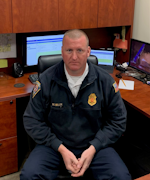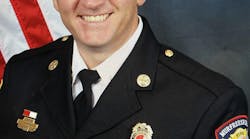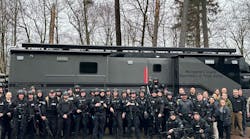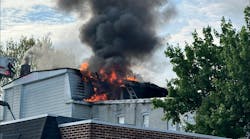In the American fire service, there are two distinct types of deployment procedures at structural fires. The first type is incident command-directed deployment procedures; the second is predetermined deployment procedures. Both deployment models are only as good as the discipline of the crews that work within the constraints of the incident commander or policy. Anything that’s outside of this that isn’t communicated is strictly prohibited; otherwise, either system will fail.
Our goals as fire department administrators are to ensure the safety of any occupants and to apply an appropriate level of operational tempo at the incident to ensure the safety of our personnel. Initial deployment actions seldomly change based on the location of the fire in most structures for initial-arriving units. Initial tasks include access to a water supply, handline selection, handline positioning and support companies ensuring, at minimum, that the first handline successfully contains the fire until additional help arrives.
For the sake of this article, I discuss developing predetermined deployment procedures for like structures. This includes occupancy type, incident command requirements, water supply procedures, first-due and second-due engine company responsibilities, first-due ladder company responsibilities and, finally, rapid intervention crew (RIC) responsibilities. Anything past the predetermined deployment procedures for these four companies will be considered on “chief’s orders.”
Several reputable organizations successfully developed and routinely deploy predetermined deployment procedures for their entire first-alarm assignment; however, that’s outside of the scope of this article. Nonetheless, the process would be the same.
Structures
Most organizations separate the predetermined deployment procedures into like structures. These include single-family residential, multifamily residential, small commercial, large commercial, mid-rise structures and high-rise structures. You must be specific as to where the break between like structures occurs. In most systems, the break between small and large commercial structures pertains to whether the building is equipped with a fire protection system. The break between mid-rise structures and high-rise structures occurs at seven stories, even when the building falls under the high-rise building code.
Incident response cards should be tailored to the occupancy type to which units respond. Often, municipalities send additional resources once a “working fire” is confirmed by first-arriving units or communications receives multiple calls regarding the incident. This decision often is data-based on how many working incidents to which a municipality responds.The established response cards must meet minimum standards set forth by NFPA 1710: Standard for the Organization and Deployment of Fire Suppression Operations, Emergency Medical Operations, and Special Operations to the Public by Career Fire Departments.
It’s a relatively easy process to set up dispatch assignments by occupancy type. Of course, the depth of resources for a large commercial structure aren’t required for a single-family residential fire. As a minimum response to a working residential incident, we routinely see three engines, two ladders, one RIC company, one medic transport unit and two chief officers. Larger structures generally receive two additional engine companies, one additional ladder company and a heavy rescue company. These additional resources might not be sent until confirmation of a working fire, depending on your deployment model.
Incident command
Incident command requirements also differ among organizations. Most systems respond with on-duty chief officers or on-call duty officers. If either of these is the case, you must determine the requirements for the first unit on scene to establish command. If engine companies respond with three personnel, including the operator, the company officer is an essential part of the crew, to get the initial attack line in service after the essential on-scene size-up and 360-degree walk-around are completed.
With predetermined deployment procedures, next-arriving companies already know their assignment, so there isn’t much need to direct them. Furthermore, the on-duty chief officer or on-call duty officer often arrives shortly thereafter and assumes command.
First-due engine company
Everything that’s done on the fireground at a working fire, regardless of the occupancy type, is in support of the first-due engine company. That includes the remainder of the response balance and chief officers, who all support getting and keeping the first handline into service. Policies should reflect this, and consistent actions must be taken by this essential unit at each incident. Often, it sets the tone for the remainder of the incident. Nothing good ever happens when the initial attack line isn’t put into operation and it isn’t supported with a continuous water supply, a backup line and an interior ladder company team.
First-due engine company responsibilities start with expectations for a continuous water supply.
Do you carry large-diameter hose (LDH) and forward lay from a hydrant or a smaller diameter supply line, where you lay out from a hydrant and the next-due company pumps it to you?
Another option: The first-due engine company goes in dry, and the second-due lays to or from a water supply source.
Either way, this must be in writing and strictly adhered to.
Next, positioning is important to state, so as not to block ladder companies from their optimal turntable positioning.
Size-up acronyms are plentiful in the fire service. Pick one and train personnel to use it. Place a reminder on the dash.
Communication
A brief radio return regarding how many lengths of hose were stretched and their diameter aids the second-due engine company in its backup line selection.
Point of entry, if other than the street side, aids later-arriving companies to complete their assigned tasks. These usually are added to the 360 report.
Nothing should inhibit the first-due engine company from getting water on the fire as soon as practical. The one exception would be an occupant in obvious peril, where you must lead off with a portable ladder in the absence of a ladder company. That, too, is a brief radio return, to give other companies a heads up that water will be delayed.
Lastly, any deviation to the predetermined deployment procedures must be stated to incoming units by the first-due unit. Examples could be the hydrant is dead or missing, direction of travel instructions for the ladder company(s) or extended hoseline stretches that require an additional company. These obviously are rare occasions; however, there must be latitude in your policy to allow for deviation. We start each unit’s assignment by stating, “Unless otherwise advised.” Communication is key on the fireground, and all radio traffic should be “essential to the good of the incident.”
Second-due engine company
The second-due engine company’s responsibilities also must be defined clearly. What are its water supply requirements in the system? Does it pump the first-due engine company’s hydrant, lay a secondary supply line, or lay into or out from the first-due engine company to the water supply?
Perhaps the most significant assignment for the second-due engine company is the rapid placement of the backup attack line. This is an essential layer of protection to the attack crew to keep the members from being overrun with fire or simply to protect the open staircase from vertical fire propagation to the upper floors. The backup handline requires a well-disciplined crew to keep the line in position and not wander off chasing fire. This is easier said than done.
The selection of the backup handline is another point that must be defined clearly in the procedures. As previously stated, the first-due engine company can add its handline selection to its 360 report to include lengths and diameter stretched. This greatly aids the second-due in determining its handline needs as it relates to meeting the criteria of a backup line. Basic criteria include stretching a handline that’s equal to or greater in diameter and at least one length that’s longer than the primary attack line. This is important in case the first handline doesn’t have the capability to control the fire or it comes up short. Crews can rapidly switch attack positions to fully extinguish the fire.
First-due ladder company
The first-due ladder company is another vital company to support the first-due engine company in completing its task. The role of this company must be defined clearly in the procedures.
In most systems, ladder companies split into interior and exterior teams. Interior teams are responsible initially for forcible entry, search, overhaul and interior utility control on the fire floor. Exterior teams initially are responsible for victim removal, portable ladder placement, ventilation, softening the structure and exterior utility control. Ensuring that these tasks are coordinated and completed is essential to a successful incident outcome.
RIC
The last company to fall under the predetermined deployment procedure is the RIC (or whatever you call it). This crew is an essential layer of protection for crews that operate within an immediately dangerous to life and health (IDLH) environment. How they go to work on the fireground must be spelled out.
Like ladder companies, the RIC generally is split into the point-of-entry crew and exterior crew. Their equipment cache should be clearly defined based on the occupancy type, as the crew brings essential equipment to the fireground that isn’t necessarily of concern to previous-arriving apparatus.
The point-of-entry crew is responsible for monitoring the assigned radio channel and ensuring that its equipment and RIC bag are easily accessible at that location. The overwhelming majority of firefighter rescues are made by interior crews that operate in the vicinity of the firefighter who’s in duress. This crew’s responsibility is to get air and whatever tools are required for the extrication to that firefighter. If activated, the backup handline is utilized to protect the firefighter(s) from fire.
The exterior RIC crew is tasked with softening the building, utility control and backing up the point-of-entry crew if activated. This is an essential crew, as the goal is to prevent the mayday from occurring in the first place.
Organizations must familiarize themselves with NFPA 1407: Standard for Training Fire Service Rapid Intervention Crews. Although members are run through mayday prevention and self-rescue scenarios, not all maydays are preventable. We must continue to ensure that specially trained firefighters are on scene with the appropriate equipment cache and ready for the myriad of unforeseen events that can occur on the fireground.








